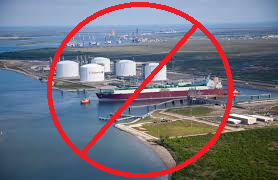Tell the EPA to Investigate Fracking-Related Water Contamination
September 21, 2013Fracking Methane Leakage Study Financed by Gas Industry with Partner, EDF, is Deeply Flawed
September 22, 2013By Darryl Fears, The Washington Post, September 7, 2013
Here is the latest on this story from Environment Virginia
George Washington National Forest is more than just one of the largest expanses of pristine land in the East. It’s the leafy cradle of the Shenandoah, James and Potomac rivers, a source of drinking water for millions of people in greater Washington.
The forest — nearly 2 million acres of natural splendor straddling Virginia and West Virginia — might also hold another treasure: natural gas trapped under a deep layer of rock called the Marcellus Shale.
By the end of the month, the U.S. Forest Service is expected to decide whether to ban or allow the controversial method of drilling called hydraulic fracturing under the forest’s new, 15-year management plan. The decision will settle a raging dispute between conservationists and the oil and gas industry.
The oil and gas industry argues that it would be unfair for the government to “slam the door” on hydraulic fracturing in the forest for such a long period of time, and points out that natural gas is a cleaner fuel than coal. Conservationists say the drilling method, also referred to as fracking, could contaminate water at its source. The process involves drilling a deep vertical well, then bending it horizontally so millions of gallons of water and toxic chemicals can be blasted into the earth to fracture shale and release gas.
The Forest Service proposed banning the practice two years ago, a move criticized by Gov. Robert F. McDonnell (R) as overreach. But the proposed ban is backed by two agencies that provide drinking water to 4.5 million customers from the Potomac: the Army Corps of Engineers — which operates the Washington Aqueduct, from which the District, Arlington County and Falls Church withdraw water — and the Fairfax County Water Authority. Read the letters supporting a ban from these agencies to the Forest Service.
Thomas P. Jacobus, the aqueduct’s general manager, called the forest streams and rivers “a key resource,” and said in a letter to the Forest Service that anything that undermines agreements made by states to preserve the water quality of the Potomac “would be unwelcome. Safe water supply is essential to life.”
Assessing the Stakes
One hundred species of fish and mussels live in the shallow waters of the Cowpasture and Jackson rivers, which gurgle in the forest along the Appalachian spine. There are also 70 types of amphibians and reptiles, 180 species of birds and 60 species of mammals. The list of all the trees, plants, fishing areas, hiking trails and campsites could fill a book.
The forest streams and rivers, called headwaters, form in the region’s highest elevations and flow down. They are the origin of the Potomac’s drinking water and provide the water that created the James and Shenandoah rivers.
The officer in charge of drafting the final management plan said he understands the stakes of allowing drilling with chemicals in one of the most pristine forests on the East Coast.
“If you had a pollutant anywhere in the watershed, it would be a concern,” said Ken Landgraf, planning staff officer for George Washington National Forest. “But in the headwaters, everyone would have to deal with that. Everybody’s going to see that further downstream in the watershed.”



